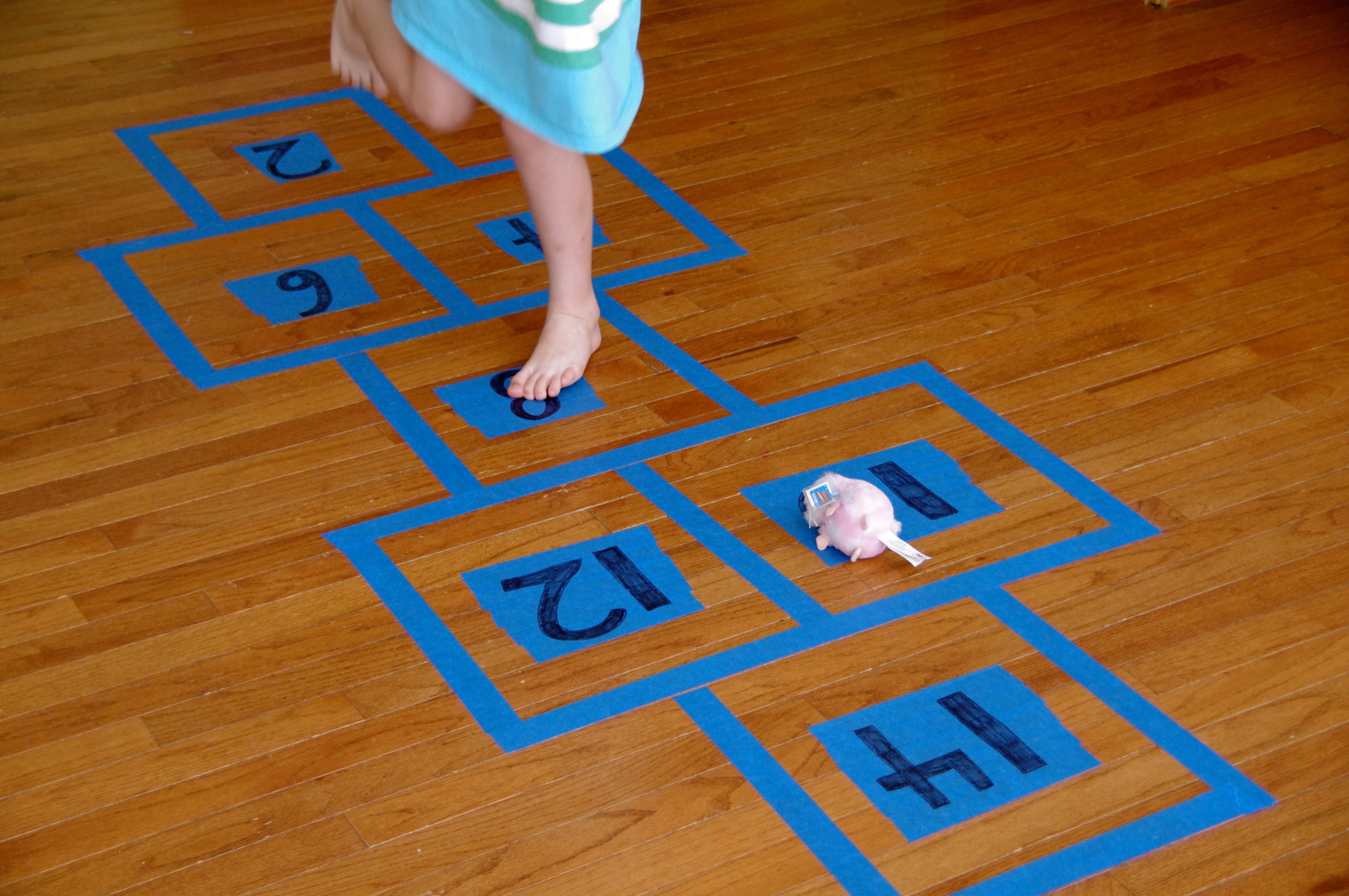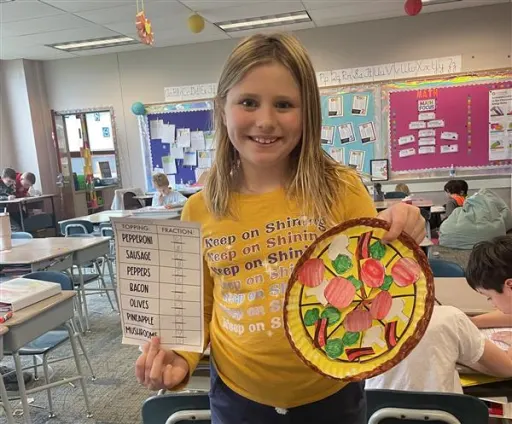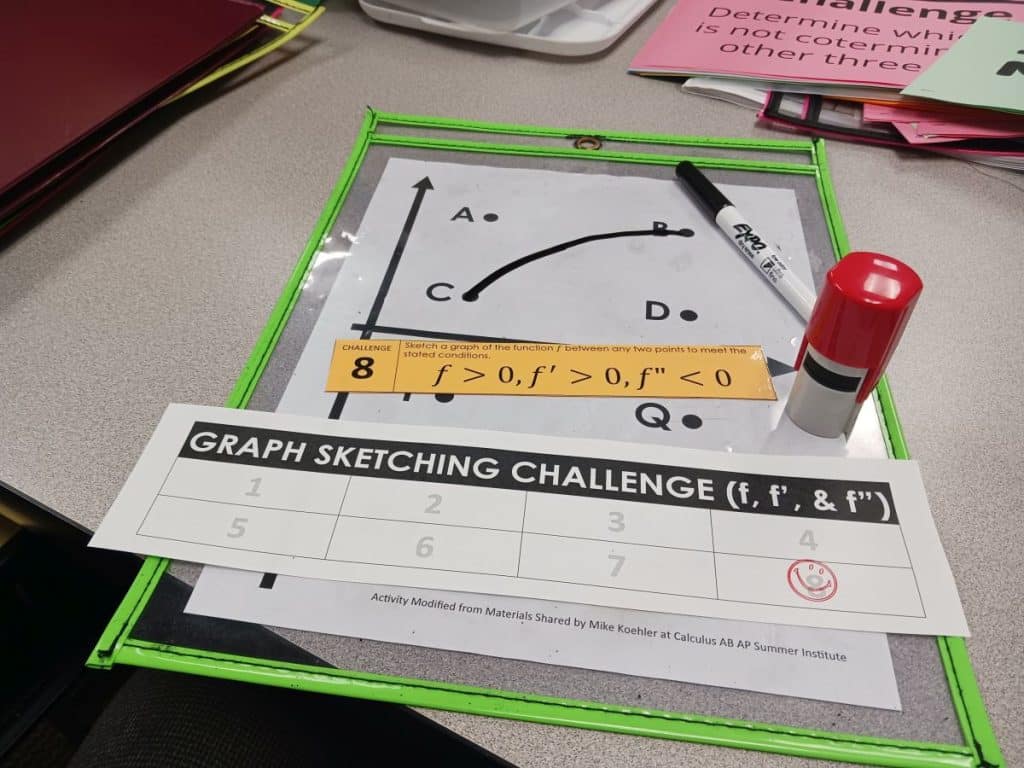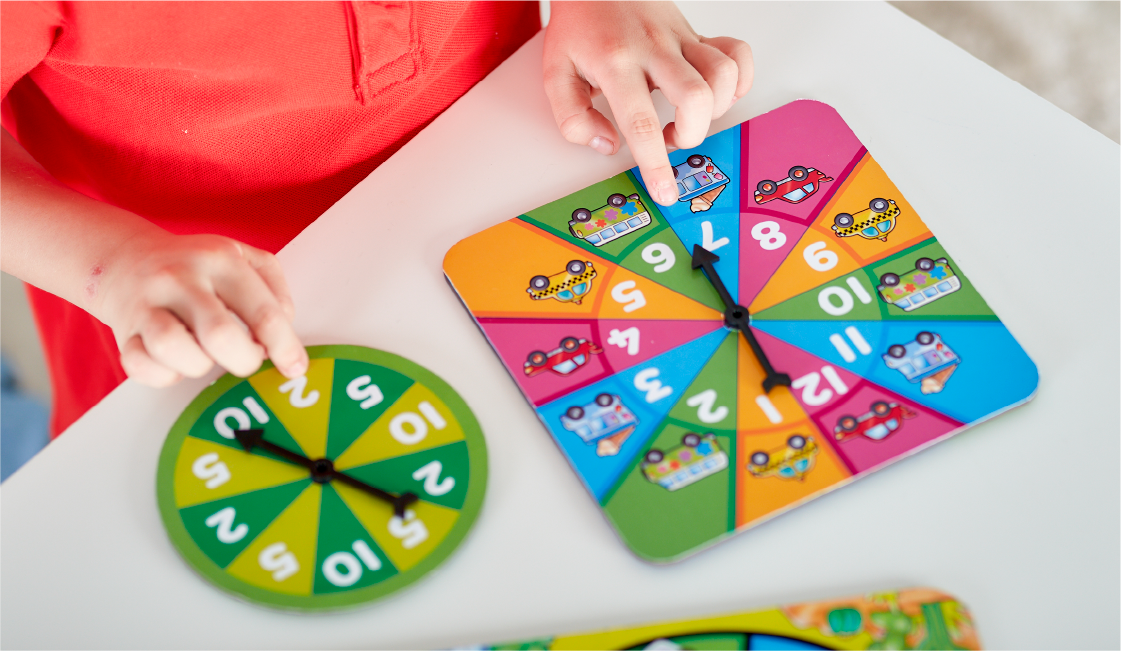30 Fun Math Games Every Kid Will Love In 2025
When taught creatively and interactively, mathematics can be a fun subject. Engaged children learn better, and there's no better way to do it than with entertaining and instructive games. Math games, either played at home or at school, can help kids gain confidence, logical thinking, and problem-solving abilities while also having a lot of fun.
This article offers 30 fun math games for kids of all ages, from easy counting exercises for young children to challenging problem-solving games for high schoolers. Any math lesson can become enjoyable with the help of these games.
Math Games For Younger Kids (Ages 4-8)
Young children learn best when they are actively engaged and having fun. These games are designed to build foundational math skills such as counting, recognizing shapes, and understanding basic arithmetic concepts.
1. Number Hunt
This game combines physical activity with number recognition. Write numbers on small cards or sticky notes and hide them around the house or classroom. For example, you can place "5" under a table and "10" inside a drawer. Give kids clues like, “Find the number that comes after 4” or “Find the number that equals 2+3.” As they find each card, they can practice counting aloud or solving a related problem.
Benefits:
- Enhances number recognition.
- Encourages physical movement.
- Develops early problem-solving skills.
2. Math Bingo
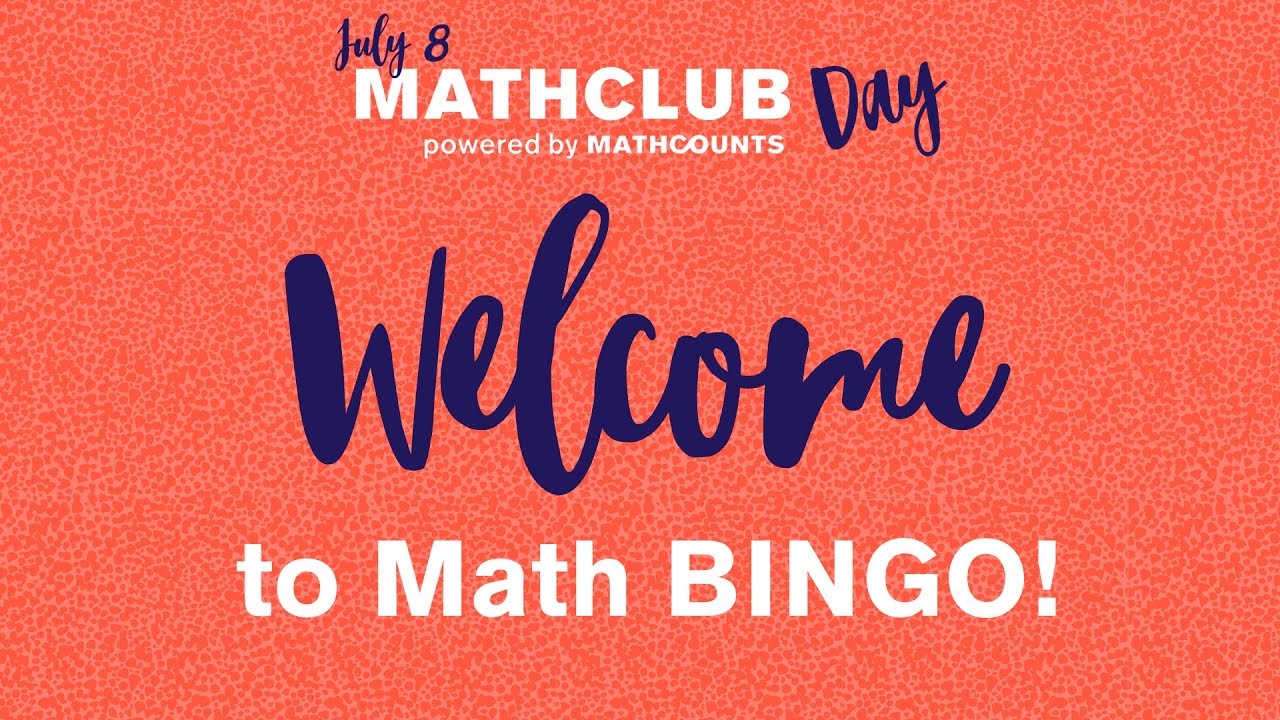
Math BINGO!
Replace traditional bingo cards with ones that have numbers or basic equations. For example, a card might include numbers like 6, 9, and 12. The game host calls out simple math problems such as "What is 3+3?" or "What is 4x3?" Players mark the correct answer on their cards. The first player to get five answers in a row shouts “Bingo!”
Benefits:
- Reinforces basic arithmetic.
- Improves listening and concentration skills.
- Fun for group settings.
3. Shape Sorting Challenge
Gather various objects, such as toy blocks, kitchen utensils, or printed cutouts of shapes. Ask children to sort them into categories based on their shapes. For example, group circles, triangles, and rectangles. You can later introduce 3D shapes like spheres, cubes, and cones to make the game more challenging.
Benefits:
- Builds an understanding of geometry.
- Improves categorization and observation skills.
- Introduces early spatial reasoning.
4. Counting With Dominoes
Dominoes are a fantastic tool for teaching counting and addition. Begin by having kids count the dots on each side of a domino. Gradually progress to adding the two sides together or comparing the totals on different dominoes to see which is greater.
Benefits:
- Develops counting and addition skills.
- Provides a visual representation of numbers.
- Encourages hands-on learning.
5. Addition Race
Write simple addition problems on cards (e.g., 3+2, 5+4) and place them at one end of the room. At the other end, line up kids. When you say “Go!”, each child runs to pick a card, solves the problem, and shouts out the answer before running back to tag the next player.
Benefits:
- Combines physical activity with mental math.
- Builds teamwork and excitement for learning.
- Improves speed and accuracy in solving problems.
6. Skip Counting Hopscotch
Draw a hopscotch grid with numbers that follow a skip-counting pattern, such as 2, 4, 6, 8, or 5, 10, 15, 20. Kids hop along the grid while saying the numbers aloud. For an extra challenge, have them skip backward or use a different pattern like 3, 6, 9, 12.
Benefits:
- Strengthens understanding of multiplication and number sequences.
- Improves coordination and balance.
- Makes math physically engaging.
7. Pattern Puzzles
Create patterns using colored blocks, beads, or crayons (e.g., red-blue-red-blue or triangle-circle-square). Ask kids to identify the pattern and continue it. For advanced learners, introduce more complex patterns involving numbers or shapes.
Benefits:
- Enhances logical reasoning.
- Encourages attention to detail.
- Builds foundational algebraic thinking.
8. Treasure Hunt With Numbers
Prepare a treasure huntby hiding "treasures" (e.g., small toys, stickers) with numbers written on them. Give kids clues based on math problems. For example, “Find the treasure that equals 2x3” or “Look for the number that is half of 8.”
Benefits:
- Combines problem-solving with adventure.
- Encourages teamwork and critical thinking.
- Makes math feel rewarding.
9. Dice Addition Battle
This game is simple but effective. Two players roll a pair of dice. Each player adds the numbers on their dice, and the one with the higher total wins the round. To extend the game, have players multiply their dice numbers instead of adding them.
Benefits:
- Improves addition or multiplication skills.
- Introduces friendly competition.
- Helps with quick mental calculations.
10. Measurement Maze
Create a maze or obstacle course using string or tape. Ask kids to measure paths in the maze using a ruler or tape measure. For example, “How long is the blue path?” or “Which path is longer, the red or yellow one?”
Benefits:
- Builds an understanding of measurement.
- Encourages exploration and hands-on learning.
- Introduces basic concepts of comparison and estimation.
Math Games For Middle School Students (Ages 9-13)
As kids grow older, math concepts become more complex. These games introduce and reinforce key middle school topics such as multiplication, division, fractions, decimals, and even algebra. They encourage critical thinking and keep students engaged through interactive challenges.
11. Fraction Pizza Party
Using a paper plate or a printable pizza template, divide the "pizza" into slices and write fractions on each slice (e.g., 1/4, 1/8, 1/2). Present problems like "Add 1/4 and 1/8" or "Which is greater: 1/2 or 3/8?" Kids can manipulate the slices to find the answers visually. For added fun, let them design their pizza toppings after solving the problems.
Benefits:
- Reinforces understanding of fractions.
- Helps visualize addition, subtraction, and comparison of fractions.
- Makes abstract concepts more concrete.
12. Multiplication War (Card Game)
This is a simple twist on the classic card game War. Using a deck of cards, each player flips over two cards and multiplies the numbers. The player with the higher product wins both pairs. For example, if one player flips a 5 and 4 (5×4 = 20), and another flips a 6 and 3 (6×3 = 18), the first player wins.
Benefits:
- Builds multiplication fluency.
- Introduces strategic thinking.
- Encourages healthy competition.
13. Geometry Art Challenge
Provide students with graph paper and a list of geometric shapes (e.g., triangles, rectangles, trapezoids). Challenge them to create an artwork using only these shapes. For advanced learners, ask them to calculate the area and perimeter of each shape in their art.
Benefits:
- Develops spatial reasoning and geometry skills.
- Encourages creativity alongside mathematical thinking.
- Makes geometry fun and interactive.
14. Decimal Shopping Spree
Set up a "store" with items priced in decimals (e.g., $1.25, $2.75, $3.50). Give students a budget (e.g., $10) and challenge them to buy items without exceeding their budget. They must add prices and calculate the remaining budget after each "purchase."
Benefits:
- Reinforces addition and subtraction of decimals.
- Teaches real-world applications of math.
- Builds money management skills.
15. Algebra Match Game
Create cards with simple algebraic equations on one set (e.g., 2x + 3 = 7) and solutions on another (e.g., x = 2). Spread the cards out and have students match each equation with its solution. For advanced learners, include inequalities or quadratic equations.
Benefits:
- Strengthens algebraic reasoning.
- Builds equation-solving confidence.
- Provides hands-on practice.
16. Percent Word Problems Race
Write percent problems on index cards, such as "What is 20% of 50?" or "If a $30 item is discounted by 15%, what is the sale price?" Divide students into teams and give each team a set of problems. The team that solves all problems correctly first wins.
Benefits:
- Reinforces percentage calculations.
- Encourages teamwork and collaboration.
- Sharpens problem-solving speed.
17. Prime Number Detective
Give students a list of numbers and challenge them to identify which ones are prime. For added fun, turn it into a mystery game: “Find the prime number that is greater than 20 but less than 30.” As they solve clues, they can "unlock" the next part of the puzzle.
Benefits:
- Builds understanding of prime numbers.
- Encourages logical thinking and deduction.
- Makes number theory engaging.
18. Coordinate Plane Battleship
Using graph paper, have students draw a coordinate plane and secretly place “ships” (lines or shapes) at specific coordinates. Players take turns guessing points on the grid (e.g., “Is your ship at (3, 4)?”). The first to sink all the opponent’s ships wins.
Benefits:
- Reinforces understanding of coordinates and graphing.
- Encourages strategic thinking.
- Makes graphing concepts interactive.
19. Math Escape Room
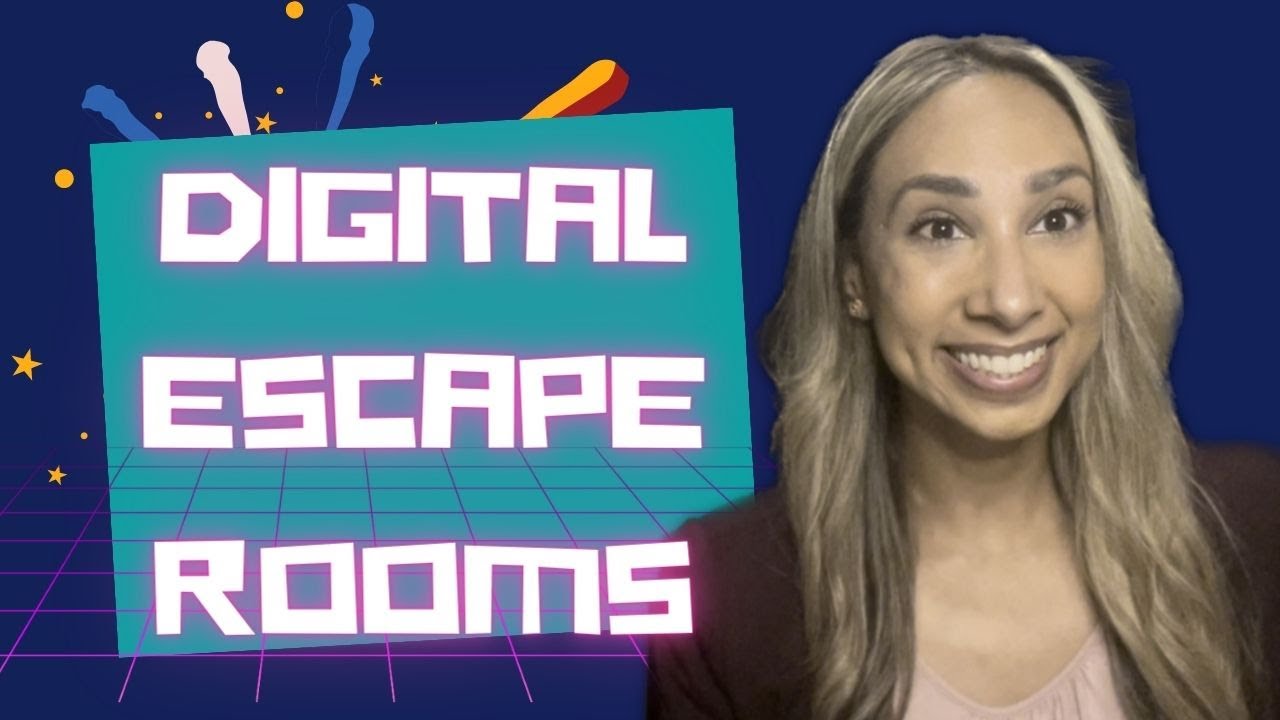
Math Escape Rooms
Design an escape room scenario where students solve a series of math puzzles to "escape" a virtual or physical room. For example, one lock might require solving a fraction problem, while another might need a geometry question.
Benefits:
- Encourages problem-solving across multiple math topics.
- Builds teamwork and collaboration.
- Provides a high level of engagement.
20. Volume Building Challenge
Give students various 3D objects like cubes, spheres, or cylinders. Challenge them to calculate the volume of each object and then combine their measurements to build a larger "structure." For example, if they have a cube with a volume of 27 cubic units and a cylinder with 40 cubic units, they can combine them into a "building" of 67 cubic units.
Benefits:
- Develops an understanding of volume and 3D shapes.
- Combines math with hands-on creativity.
- Reinforces the practical use of formulas.
Math Games For High School Students (Ages 14-18)
High schoolers require activities that challenge their critical thinking and prepare them for advanced math concepts. These games cover algebra, probability, statistics, and calculus while keeping learning enjoyable.
21. Algebra Relay Race
Divide students into teams. Write algebra problems on the board, such as "Solve for x: 3x + 5 = 20." One player from each team races to the board, solves the problem, and runs back to tag the next teammate. The team with the most correct solutions wins.
Benefits:
- Builds confidence in solving equations.
- Encourages teamwork and physical activity.
- Makes algebra exciting and fast-paced.
22. Probability Carnival
Set up a "carnival" with games of chance, such as rolling dice, flipping coins, or drawing cards. Ask students to calculate the probabilities of winning each game. For example, “What is the probability of rolling a 6 on a die?” or “What are the odds of drawing a heart from a deck of cards?”
Benefits:
- Reinforces probability concepts.
- Combines math with real-world scenarios.
- Encourages analytical thinking.
23. Calculus Graphing Contest
Provide students with functions like f(x) = x² or f(x) = sin(x). Challenge them to graph the function on paper or using software like Desmos. Award points for accuracy, creativity, and understanding.
Benefits:
- Reinforces graphing and calculus concepts.
- Enhances understanding of functions.
- Makes abstract ideas more visual.
24. Budget Simulation
Give students a pretend monthly income and ask them to create a budget, factoring in expenses like rent, groceries, and entertainment. They must calculate percentages for savings and analyze where their money goes.
Benefits:
- Teaches practical financial skills.
- Reinforces percentage and division concepts.
- Prepares students for real-life math applications.
25. Logic Puzzle Tournament
Use math-based logic puzzles like Sudoku or KenKen. Organize a tournament where students compete to solve puzzles the fastest. For an added challenge, create custom puzzles that involve algebra or geometry concepts.
Benefits:
- Sharpens logical reasoning.
- Builds perseverance and focus.
- Adds a competitive yet fun element.
26. Statistical Survey Analysis
Ask students to create their own surveys on topics they find interesting (e.g., favorite snacks, preferred music genres). Once they collect data, have them analyze it by calculating measures of central tendency (mean, median, mode) and create graphs or charts to visualize the results. They can also discuss variability and patterns in their findings.
Benefits:
- Builds understanding of statistics and data analysis.
- Encourages critical thinking and real-world applications.
- Develops presentation and interpretation skills.
27. Math Jeopardy
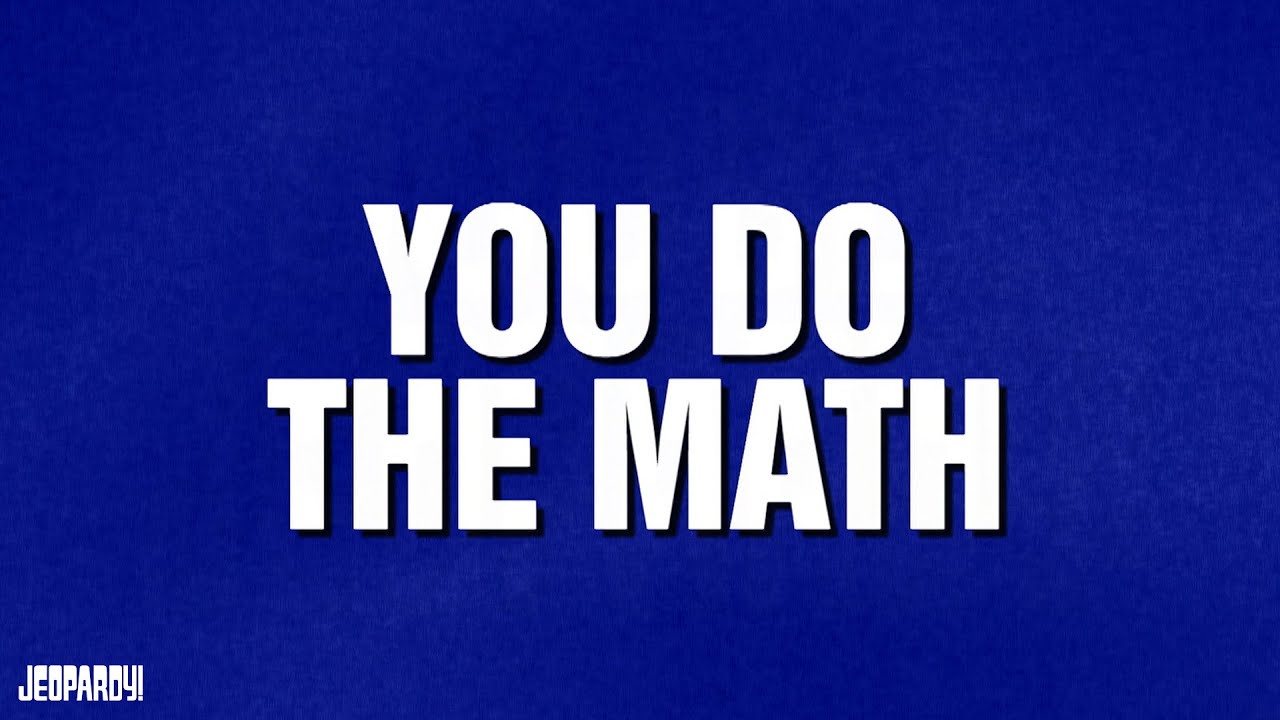
You Do The Math | Category | JEOPARDY!
Create a Jeopardy-style game with math categories, such as Algebra, Geometry, Trigonometry, Calculus, and Probability. Prepare questions of varying difficulty levels, and let students play in teams. For example, a $200 Algebra question might be “Solve: 2x - 3 = 7,” while a $1000 Calculus question could be “Find the derivative of f(x) = x³ + 2x.”
Benefits:
- Provides a competitive yet collaborative learning experience.
- Reinforces knowledge across multiple topics.
- Builds confidence in solving math problems.
28. Real-World Graphing Challenge
Ask students to find real-world examples of graphs, such as temperature changes over a month or stock market trends. Then, have them analyze the graph’s key features: slopes, intercepts, and overall trends. They can also create their own graphs using data they research or collect.
Benefits:
- Connects math to real-life scenarios.
- Enhances understanding of graph interpretation.
- Promotes independent research and analysis.
29. Trigonometry Treasure Hunt
Set up a treasure hunt where students solve trigonometric problems to uncover clues. For example, they might need to calculate the height of a tree using a given angle of elevation and the length of the shadow. Each correct answer leads them to the next station until they reach the “treasure.”
Benefits:
- Reinforces trigonometric ratios and applications.
- Encourages teamwork and practical problem-solving.
- Adds an adventurous and interactive twist to math.
30. Business Simulation: Profit And Loss
Give students a scenario where they run a pretend business. Provide them with information about costs (e.g., materials, rent, labor) and revenues. They must calculate profits or losses based on these figures. For advanced students, introduce concepts like break-even analysis or variable costs.
Benefits:
- Teaches practical applications of percentages and arithmetic.
- Introduces concepts of economics and finance.
- Prepares students for real-world decision-making.
Benefits Of Playing Math Games
1. Enhance Engagement
Math games capture students' attention by transforming learning into a fun and interactive experience. Unlike traditional worksheets or lectures, games create excitement and motivate students to participate actively. When students are engaged, they focus better and are more willing to tackle even complex problems. The competitive or cooperative elements in games often encourage persistence, as students are eager to "win" or solve challenges.
For instance, a game like “Math Bingo” turns solving equations into a lively activity, where students hardly notice they are practicing important skills. Engaged learners retain concepts more effectively, making these activities an excellent teaching tool.
2. Encourage Collaboration
Many math games are designed for group participation, encouraging students to work together toward a shared goal. Team-based games, such as “Math Jeopardy” or “Escape Room Challenges,” promote communication, negotiation, and the division of responsibilities. Through collaboration, students learn from each other, sharing strategies and insights that they might not have considered individually.
This cooperative environment fosters peer-to-peer teaching, where stronger students help others, and weaker students gain confidence by contributing to the team’s success. Collaboration also builds social skills, teaching kids how to interact respectfully and productively in group settings.
3. Foster Problem-Solving
Math games challenge students to think critically and devise strategies to succeed. Unlike repetitive drills, games often involve solving puzzles, recognizing patterns, or using logic to overcome obstacles. For example, a game like “Sudoku” requires players to analyze rows and columns, enhancing their ability to approach problems systematically.
These activities strengthen critical thinking and decision-making skills, which are essential in both math and everyday life. By practicing problem-solving through games, students develop resilience and creativity in tackling complex tasks, laying a foundation for future success. Additionally, playing games such as Lost Life APKcan offer new ways for students to engage with educational challenges, enhancing their overall learning experience.
4. Build Confidence
Math games provide a safe and supportive environment for students to practice without fear of failure. Success in games, even on small scales, boosts self-esteem and makes students feel capable of handling math challenges. Games often allow for repeated attempts, encouraging students to try again until they get it right.
For instance, when playing “Fraction Pizza,” students might struggle initially but eventually succeed in dividing pizzas into correct portions. Each small victory helps them associate math with positive feelings, reinforcing their belief in their own abilities. Building confidence in this way reduces math anxiety and creates a sense of accomplishment.
5. Dynamic And Inclusive Learning
Incorporating math games into lessons ensures that learning becomes an inclusive and dynamic experience. Games can be adapted to suit various age groups, skill levels, and learning styles, ensuring that every student is actively involved. For example, younger kids might enjoy simpler games like “Counting Hopscotch,” while older students could benefit from strategic challenges like “Algebra Battleship.”
By tailoring games to meet individual needs, educators can create a supportive environment where students feel valued and capable. These activities break away from monotonous drills or lectures, turning math into an enjoyable and meaningful subject for all.
How To Incorporate Math Games Into Learning
1. At Home
Parents can seamlessly incorporate math games into everyday routines, turning learning into a fun family activity. By using simple tools like dice, cards, or household items, parents can create engaging math games that help kids practice skills like addition, subtraction, or fractions.
For instance, a game like “Counting Coins” can teach children about money and basic arithmetic during grocery shopping or while organizing loose change at home. Beyond traditional games, exploring creative methods like how to integrate math into piano lessonscan offer a unique and engaging approach to learning mathematical concepts through music.
2. In Classrooms
Teachers can use math games as an effective way to reinforce key concepts and break away from traditional teaching methods. By integrating games into lesson plans, educators make math more interactive and enjoyable for students. For instance, games like “Math Relay Races” can help students practice multiplication tables while moving around the classroom, combining physical activity with learning.
Classroom math games also promote peer interaction and teamwork. Games like “Number Line Hop” or “Fraction Puzzles” encourage group problem-solving and communication, fostering a collaborative learning environment.
3. Digital Tools
Online math games and educational apps offer a modern and engaging way to teach math concepts. Platforms like Prodigy, Khan Academy Kids, or Math Playground provide a wide range of games tailored to different grade levels and skills. These digital tools often include adaptive learning, where the difficulty adjusts based on the student’s progress, ensuring they are neither overwhelmed nor under-challenged.
Digital games are also an excellent option for busy parents and teachers, as they allow students to learn independently while still having fun. The use of gamified rewards, like earning points or badges, keeps students motivated and excited to learn. For those seeking more structured learning resources beyond games, check out the best websites to learn mathematics onlinefor access to comprehensive courses, tutorials, and practice exercises.
FAQs
How Do I Choose The Right Math Game For My Child?
Consider the child’s age, skill level, and interests. Younger kids may prefer hands-on games, while older students enjoy strategic ones.
How Often Should Students Play Math Games For Effective Learning?
Regularly incorporating games into learning once or twice a week can make a significant impact on understanding and retention.
What Is The Most Funnest Math Game?
- Around the World. ...
- Hot Potato. ...
- Math Facts Race. ...
- Stella Ella Ola to 100. ...
- Jeopardy. ...
- Jump on the Answer. ...
- Home Made Board Game. ...
- Popsicle stick Poll.
How To Make Math Fun For High School Students?
Incorporate Games and PuzzlesGames such as Sudoku, math bingo, and math-related board games can help students practice their math skills while having fun. These games provide a different way of learning and can be used as a reward for completing assignments or as a fun way to start a lesson.
Final Words
Math doesn’t have to be intimidating or boring. Through creative and interactive math games, students of all ages can build essential skills while having fun. These activities encourage a joy of studying in addition to improving mathematics comprehension.
If you’re a teacher looking for classroom activities or a parent searching for engaging ways to help your child practice math at home, these games offer a wealth of opportunities to make math an enjoyable experience.
